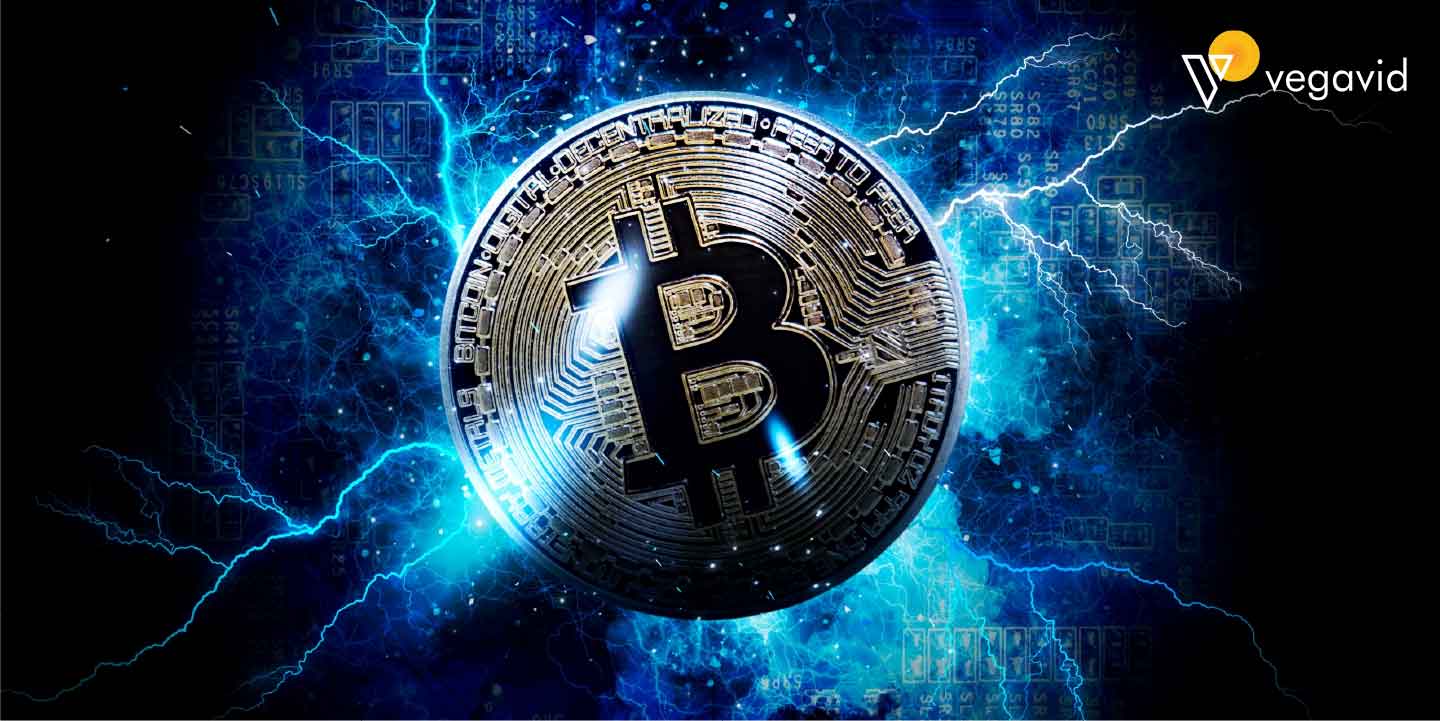
Bitcoin showed the world a new digital form of money operating without intermediaries. However, while the concept was groundbreaking, scaling issues came to limit its real-world use. Transaction fees rose and speeds slowed as adoption grew, hampering Bitcoin’s utility for common payments. Then emerged the idea of the Lightning Network— moving transactions off-chain through a network of payment channels. This novel approach promised to exponentially expand Bitcoin’s capabilities. Several years since its launch, the Lightning Network now reveals its immense potential to address cryptocurrency’s challenges and fuel widespread global use as digital cash for the coming decades.
Significance Of Lightning Network In Addressing Scalability Issues
The Lightning Network holds great potential to solve Bitcoin’s scalability problems. As Bitcoin grew in popularity, the blockchain was unable to process more transactions. Each block can only hold so many transactions before network fees rise and waiting times increase. This made Bitcoin unusable for small, everyday payments.
The LN works to move transactions “off-chain”, settling them through a network of payment channels instead of broadcasting each one to the blockchain. Participating nodes create payment channels by locking up Bitcoin balances in smart contracts. They can then transact instantly and privately without creating blockchain transactions each time. Channels only settle balances to the blockchain when they close.
This has massive scaling advantages. Instead of each transaction clogging the blockchain, LN allows unlimited transactions within channels as long as their combined balance hasn’t changed. It exponentially multiplies Bitcoin’s transaction capacity without enlarging block sizes or decreasing security. With payment channels open between many participating nodes, funds can route across the network similar to how data routes on the internet.
By keeping most transactions off the main chain, LN brings Bitcoin’s transaction processing into the modern internet era. It allows fast, low-cost micropayments that simply weren’t possible earlier without exorbitant fees. Everyday use cases like buying a coffee or sending small payments to friends become viable once again. LN’s rapid growth has seen it carry billions of dollars in transaction volume, showing real promise to resolve the scalability issues hindering mainstream Bitcoin adoption.
With continued development, Lightning Network may one day empower Bitcoin to compete even with payment platforms like Visa in transaction speed and volume. This boosts cryptocurrency’s viability for global peer-to-peer digital cash and commerce at scale. It gets us a step closer to the original vision of decentralized, low-cost transactions without intermediaries that first inspired Bitcoin’s creation. Only time will tell how successful LN ultimately becomes, but its approach shows real potential for Bitcoin’s long-term scaling needs.
How LN Enables Faster and Cheaper Transactions?
The Lightning Network provides significant improvements in transaction speed and cost compared to the regular Bitcoin blockchain. With LN, users can transact almost instantly for negligible fees. This makes Bitcoin practical for even the smallest everyday payments.
When transacting directly on the blockchain, users must wait for their transaction to be confirmed in a block. This can take 10 minutes on average due to Bitcoin’s 10-minute block timing. With the LN, payments between channels settle almost instantly since they don’t get added to the blockchain. Nodes just update local payment channels, allowing real-time funds transfer.
Similarly, Bitcoin transaction fees rise based on network demand and block space. Producing a transaction can cost well over a dollar, which is impractical for small purchases. But LN transactions have ultra-low or no fees. Nodes negotiate fees within payment channels without burdening the blockchain. They also have no block size limits, enabling high transaction throughput.
LN’s fast, low-cost transactions help Bitcoin compete with other payment systems with more transactions per second. Services like PayPal and credit cards settle transactions within seconds, something Bitcoin struggled with previously due to its decentralized nature. But with off-chain channels, Lightning brings Bitcoin transaction times much closer to these centralized systems.
This creates use cases like paying a website subscription in sats each month. Regular on-chain transactions wouldn’t work due to delays and high costs. But with Lightning, such microtransactions are finally practical. The network’s growing capacity means these benefits will only increase over time as it scales to support even more activity. Faster, cheaper payments are key to Bitcoin achieving widespread adoption as digital cash.
Comparison With On-Chain Transactions
Transactions that occur directly on the Bitcoin blockchain, called on-chain transactions, have some limitations compared to those that happen via the Lightning Network. On-chain transactions are limited by block size and confirmation times, making them slower and more expensive.
Block times average around 10 minutes for Bitcoin. Users must wait this long for an on-chain transaction to fully confirm in a block. With the LN, payments occur instantly between parties without waiting. Channel balances update off-chain, allowing constant real-time transactions instead of periodic blocks.
Each block can only hold a certain number of transactions before the next one is mined. This creates competition to have an on-chain transaction confirmed, raising transaction fees as demand increases. But LN payments don’t clog the blockchain, enabling unlimited transactions between two nodes.
As Bitcoin grew, on-chain transaction fees became impractical for small purchases like a coffee. Paying a dollar in fees to send $5 doesn’t make sense. But with Lightning, microtransactions are viable due to near-zero costs and immediate settlement. This expands Bitcoin’s utility for day-to-day payments beyond just large currency movements.
On-chain also broadcasts all transactions publicly on the blockchain. The LN provides greater privacy by keeping transactions between nodes encrypted and off the main chain until channels close. Only final balances, not individual payments, are published publicly.
Key Features of The Lightning Network
The key attributes that distinguish Lightning and make it a breakthrough for Bitcoin are payment channels, off-chain routing, and instant settlements with enhanced scale, low costs, and privacy. These features are explained in detail as follows-
- Payment Channels: LN uses smart contracts called payment channels that lock Bitcoin balances between two nodes. This allows unlimited transactions as long as the combined balance hasn’t changed.
- Network Routing: The payment channels form a network where funds can route across multiple hops similar to data routing on the internet. Nodes maintain dynamic maps of channels to help funds navigate the network.
- Off-Chain Settlement: Transactions between nodes occur instantly off the main Bitcoin blockchain through updated channel balances. This massively scales transaction capacity without enlarged blocks.
- Settlement on Closure: When a payment channel closes, its final balance is settled on-chain in a regular blockchain transaction. Only closure transactions hit the blockchain.
- Microtransactions: With near-instant settlement and minuscule fees per transaction, LN opens the door for micropayments like per-minute streaming costs or pay-per-view online content.
- Enhanced Privacy: Individual payments between nodes within channels are encrypted and not broadcast publicly. Only closing balances are visible, increasing financial privacy compared to every on-chain transaction.
- Decentralization: Unlike some other scaling proposals, LN maintains Bitcoin’s censorship-resistant, decentralized nature since anyone can participate without permission from centralized authorities.
- Smart Contract Scripting: Channels use Bitcoin’s smart contract scripting ability to lock funds, enforce balances, and only allow settlement on the chain as specified.
- Growing Adoption: Major businesses and wallets are implementing LN, driving expansion of the live network running billions in capacity to support more users and transactions.
Benefits Of the Lightning Network
The Lightning Network brings substantial improvements over the standard Bitcoin blockchain, providing numerous benefits to users and the ecosystem. Its novel approach helps expand cryptocurrency’s capabilities while retaining the core philosophies of decentralization and peer-to-peer currency. Some of the primary advantages offered by LN include:
- Scalability: By moving most transactions off-chain, LN exponentially multiplies Bitcoin’s capacity without enlarging block sizes. This allows for massive scaling to support worldwide adoption levels of activity.
- Speed: Transactions occur nearly instantly as balances update off-chain. There is no need to wait 10 minutes for block confirmations as with on-chain payments.
- Lower Costs: Fees for routing payments through LN are negligible in comparison to rising on-chain transaction fees during spikes in usage. This keeps Bitcoin usable even for microtransactions.
- Enhanced Privacy: Individual payments through channels are kept private from prying eyes, increasing financial confidentiality compared to every transaction being permanently recorded on the public blockchain.
- Accessibility: With low fees and fast speeds, even cheap everyday payments become viable applications of cryptocurrency for the first time. This expands Bitcoin’s potential user base.
- Decentralization: As an open network, anyone can participate in routing payments without requiring trust in a centralized third party. LN aligns with Bitcoin’s philosophy of no central control.
- Innovation: The network continues evolving through new releases tested on the live network, driving further upgrades to performance, user-friendliness and new capabilities for the future of digital money.
The Lightning Network empowers Bitcoin to achieve new levels of scalability, usability and real-world adoption potential through its innovative off-chain transaction model and suite of user-oriented benefits.
Challenges And Criticisms
While the Lightning Network shows tremendous promise, it is not without its challenges and criticisms. As with any new technology, there are issues to address as development continues. Some of these challenges and criticisms are-
- Complexity: Setting up and using LN requires more technical knowledge than simply sending on-chain Bitcoin payments. This adds friction for non-technical users.
- Centralization risk: If a few large nodes end up routing the majority of traffic, it could lead to centralization problems defeating the purpose of a decentralized system.
- Liquidity concerns: Channels need to be pre-funded with Bitcoin deposits which are locked up until closure. This could concentrate economic power in the hands of well-funded channel holders.
- Routing failures: Payments may fail to find a clear path through the network of channels during periods of congestion or if the topology isn’t interconnected enough.
- Locked funds: Bitcoins placed in channels are locked up and unavailable for other transactions until the channel closes, unlike Bitcoin which can be spent instantly.
- Custody challenges: Third-party LN wallets hold the private keys to channels on users’ behalf, posing custody and security risks if not properly managed.
- Immaturity: As a young project still in development, LN has issues to iron out around UX complexity, edge case handling, and overall stability before reaching maturity for mainstream adoption.
While promising in theory, only continued real-world testing on the live network will prove how well the Lightning Network performs at scale and the resilience of its solutions to these potential challenges. Many are confident that with ongoing work they can be addressed over time.
Real-world Applications and Adoption
From the beginning, the LN team aimed to build something that would enable Bitcoin to be usable in daily life. Several years after launch, that vision is becoming a reality as mainstream businesses large and small embrace Lightning.
Major payment platforms now offer LN support. Cash App lets send/receive Bitcoin via lightning. Bitrefill sells vouchers for stocks, bills, and gift cards lightning. Products like these demonstrate cryptocurrency can function like ordinary money, however big or small the purchase.
Online marketplaces integrated LN payments. Cheapair allows booking flights, and OpenBazaar lets you buy products directly from creators. Games website Nitrogen lets betting in lightning, useful where regulated. Even larger e-commerce might soon follow as user demand and benefits become clear.
Content providers accept payments in lightning. People can tip Twitter users or pay YouTube subscriptions in sats without onerous fees. Streamr is exploring micropayments for real-time data via lightning mircotxns. Such small, frequent payments become practical via instant, inexpensive LN transactions.
In-person, people increasingly buy coffee or food using LN. Fold lets spending bitcoins anywhere Visa debit cards work by converting to fiat instantly at checkout. Bitcoin companies have begun adopting it internally for everything from payroll to invoices between parties. Its real-world benefits are motivating adoption from the grassroots up.
As bitcoin sees more experimentation across industries, the lightning network will play a crucial role in maximizing cryptocurrency’s impact through near-instant, minimally-costly transactions. Its early growth shows huge promise, but also just a glimpse of what’s possible as development and deployment continue expanding its applications into our digital lives.
Conclusion
The Lightning Network takes Bitcoin’s groundbreaking technology and advances it further with solutions that strengthen cryptocurrency for our digital age. By keeping most transactions private yet accessible through an ever-growing decentralized network, it empowers Bitcoin to finally compete with incumbent centralized systems in speed, cost, and scale. With continued development reducing friction for average users and expanding real-world integrations, the future of cryptocurrencies as peer-to-peer electronic cash looks bright. The Lightning Network presents a ray of hope that the original vision of digital currency unlocked from control may yet be realized to change global finance for the better. Only time will tell how far its promise can be fulfilled.











